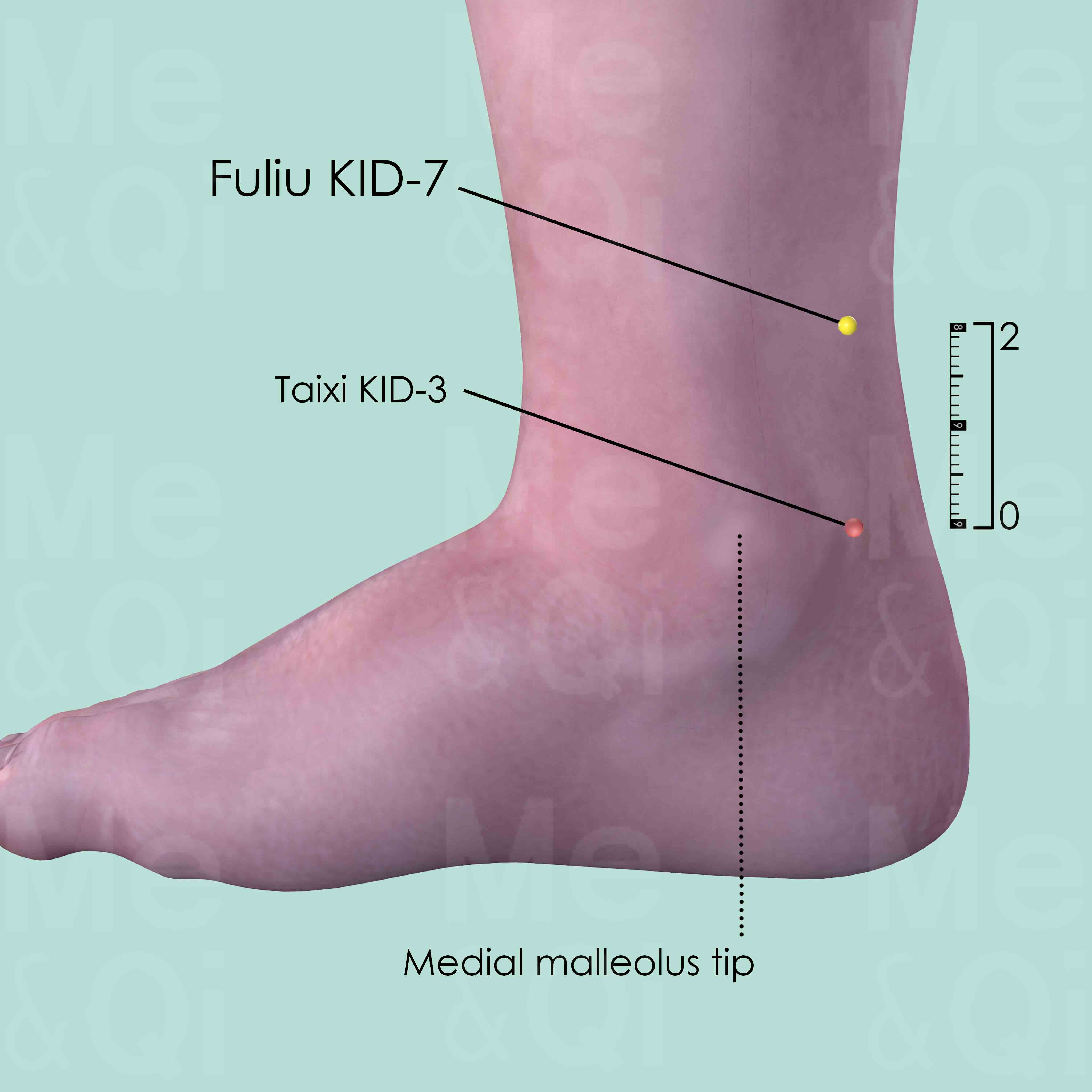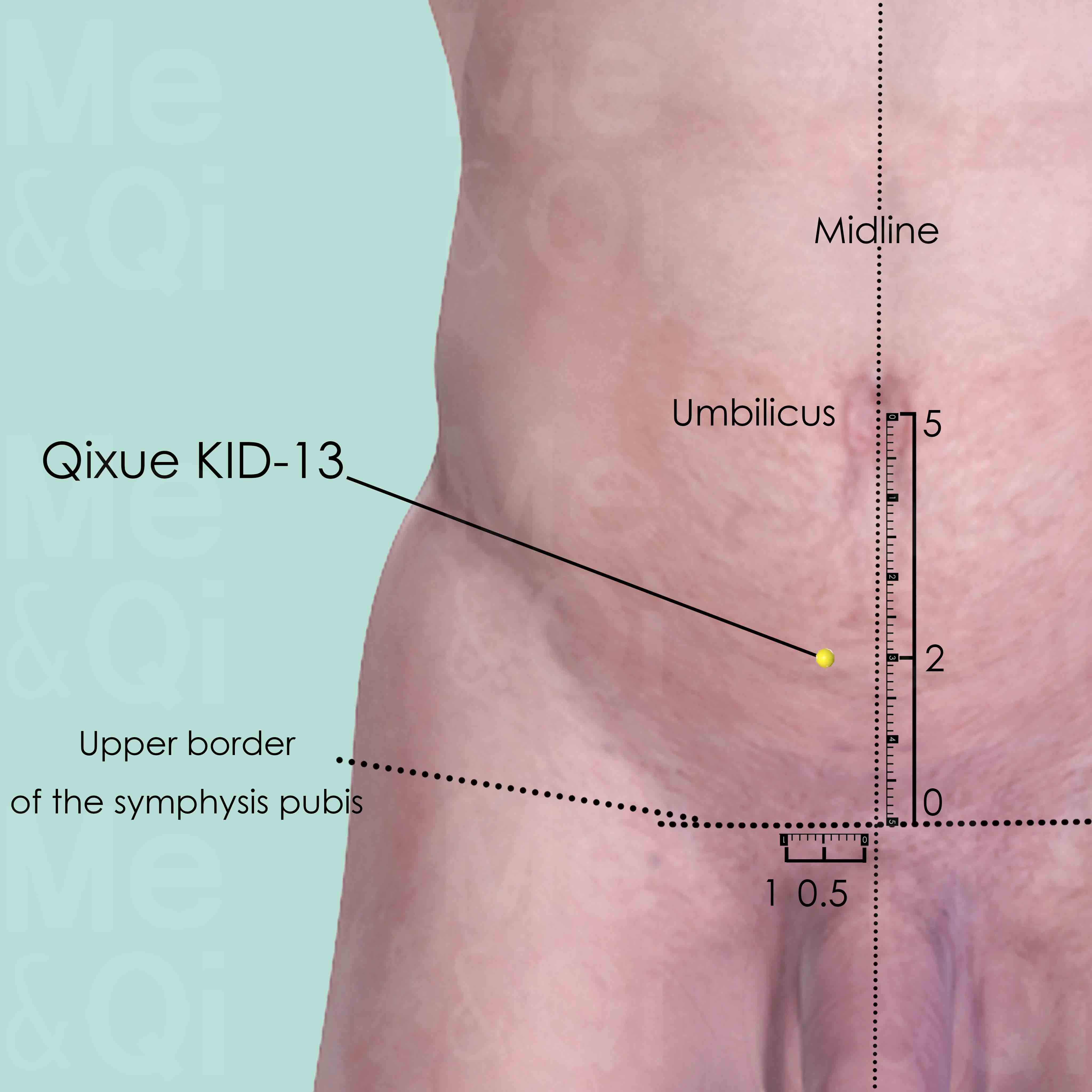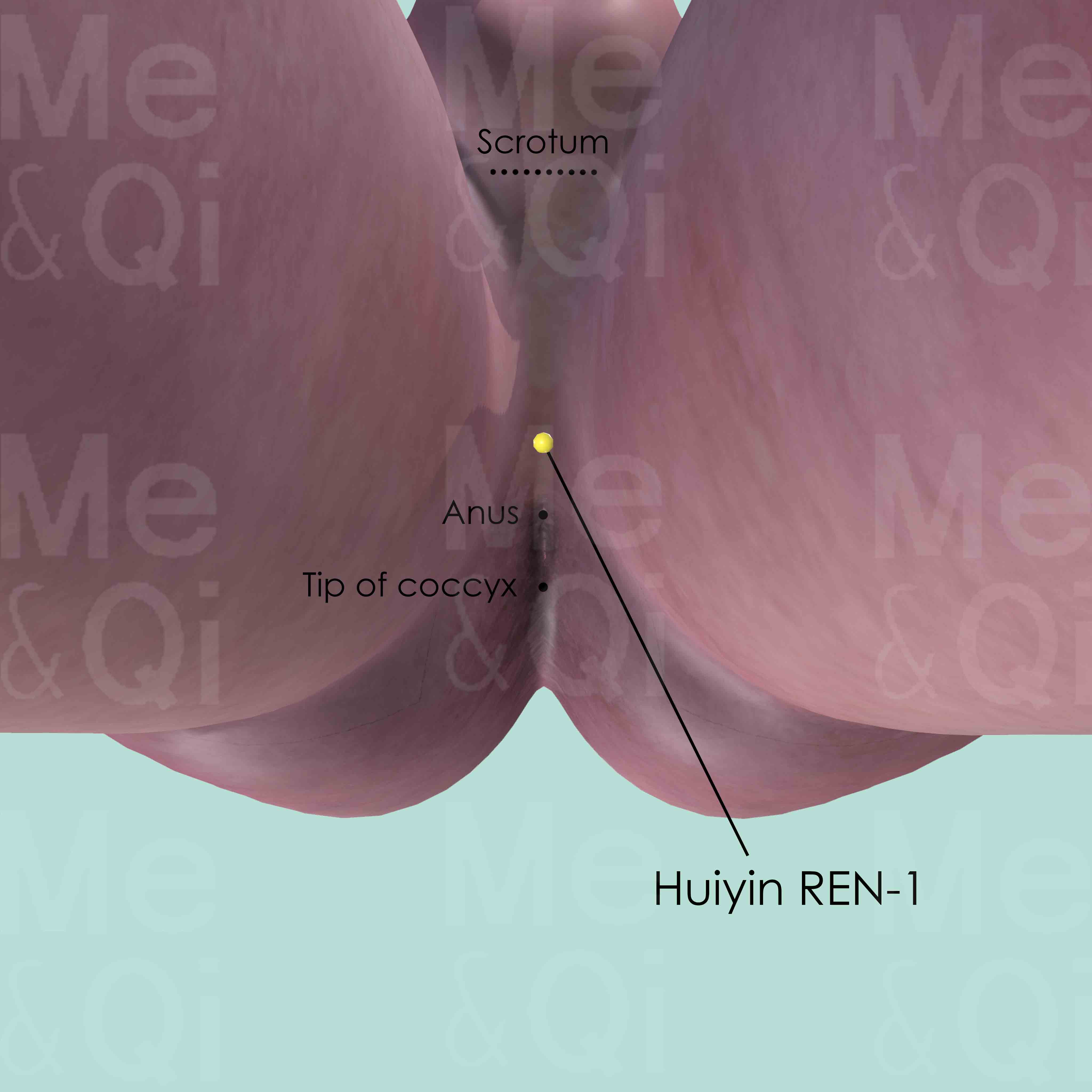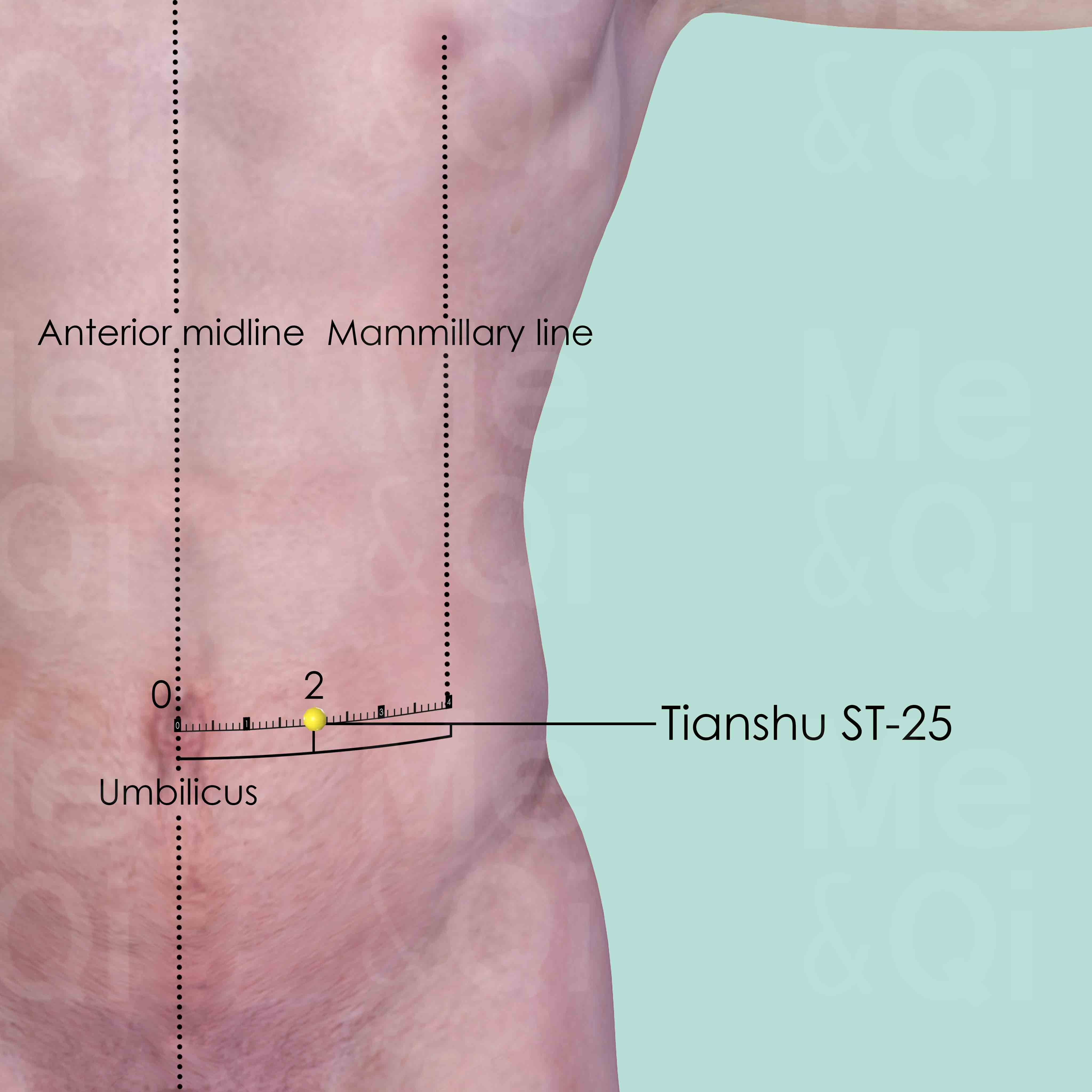Cloudy Urineaccording to TCM
Symptom family: Urine Color & Composition Abnormalities
What is Cloudy Urine?
Cloudy urine, medically known as turbid urine, is characterized by a lack of clarity and a milky or opaque appearance. It can vary in color from pale to dark and may sometimes resemble rice water.
This symptom can indicate various underlying conditions, ranging from dehydration to urinary tract infections or more severe kidney-related diseases. The cloudiness is often due to the presence of substances like proteins, bacteria, blood, or crystals that are not typically found in healthy urine.
How does TCM view Cloudy Urine?
In Traditional Chinese Medicine (TCM), cloudy urine is viewed through the lens of energy imbalances and disharmony in the body's systems. TCM practitioners believe that symptoms like cloudy urine arise from disruptions in the flow of Qi, the vital life force, and imbalances in the body's Yin and Yang energies.
These imbalances are often attributed to factors like Dampness, Cold, or Heat affecting the bladder and kidney functions. TCM aims to restore harmony and balance through various treatments, including herbs, acupuncture, and dietary adjustments.
Root Causes of Cloudy Urine in TCM
TCM attributes cloudy urine to several patterns of disharmony, primarily involving Dampness and Cold. For example, Damp-Heat in the Bladder can manifest as cloudy urine with symptoms like frequent and urgent urination, urinary burning, and fever.
On the other hand, Damp-Cold in the Bladder might present as cloudy urine with a pale color, accompanied by urinary discomfort and abdominal heaviness. Understanding these patterns is essential for TCM practitioners to provide effective treatment tailored to the individual's specific condition.
Explore below more details about what might cause Cloudy urine according to TCM.
Dampness
"Dampness" in TCM is a concept that describes a pattern of disharmony where the body accumulates excess moisture. Imagine the heavy, sticky feeling you get on a very humid day; that's similar to what dampness feels like internally. It can manifest as a sense of heaviness, bloating, sluggishness, or even a foggy mind. This condition is often thought to arise from environmental factors like living in a damp place, dietary habits that promote moisture in the body, or internal imbalances that hinder the body's ability to process fluids properly. In TCM, dampness can obstruct the normal flow of energy and fluids in the body, leading to various symptoms.... see more
Dampness Patterns That Can Lead to Cloudy Urine
Common Symptoms: Frequent And Urgent Urination Urination Stopping In The Middle Of Flow Urinary Burning Dark Urine Hematuria Fever Dry Mouth Without Desire To Drink Lower Abdominal Fullness And Pain
| Pattern Name | Relevant Symptoms | Relevant Formulas |
|---|---|---|
| Damp-Heat in the Bladder | Urine the color of rice water - grey and cloudy, Turbid urine, Frequent and urgent urination, Urinary burning, Urination stopping in the middle of flow, Dark urine, Cloudy urine, Hematuria, Fever, Dry mouth without desire to drink, Lower abdominal fullness and pain, Feeling hot... see more | Bi Xie Fen Qing Yin | Ba Zheng San |
| Damp-Cold in the Bladder | Turbid urine, Frequent and urgent urination, Urination stopping in the middle of flow, Upper abdominal heaviness, Urethral heaviness, Cloudy urine, Pale urine... see more | Ba Zheng San | Wu Lin San | Shi Wei San |
| Dampness in the Gallbladder | Turbid urine, Jaundice, Dull yellow complexion, Yellow eyes, Hypochondriac pain, Hypochondrial fullness with warmth relief, Nausea or vomiting, Fat malabsorption, Yellow sclera, Cloudy urine, Absence of thirst, Sticky taste in the mouth, Dull headache, Feeling of heaviness... see more | San Ren Tang |
Cold
In TCM "Cold" as a pattern of disharmony refers to a specific type of imbalance within the body's systems, often linked to a deficiency or weakness. It's not about feeling physically cold or having a common cold, but rather a metaphorical description of certain symptoms and underlying conditions. When a TCM practitioner says someone suffers from "Cold," it usually implies that the body's Yang energy, which is warm and active, is insufficient or overpowered by Yin energy, which is cool and passive. Symptoms of Cold in TCM can include a general feeling of coldness, cold limbs, pale complexion, low energy, slow metabolism, and a preference for warmth. ... see more
Cold Patterns That Can Lead to Cloudy Urine
Common Symptoms: Frequent And Urgent Urination Urination Stopping In The Middle Of Flow Upper Abdominal Heaviness Urethral Heaviness Pale Urine Confusion Poor Memory Urinary Or Fecal Incontinence
| Pattern Name | Relevant Symptoms | Relevant Formulas |
|---|---|---|
| Damp-Cold in the Bladder | Turbid urine, Frequent and urgent urination, Urination stopping in the middle of flow, Upper abdominal heaviness, Urethral heaviness, Cloudy urine, Pale urine... see more | Ba Zheng San | Wu Lin San | Shi Wei San |
| Bladder Deficiency with Cold | Urine the color of rice water - grey and cloudy, Confusion, Poor memory, Urinary or fecal incontinence, Lower back pain, Dizziness, White urethral discharge, Chills, Frequent urination, Cloudy urine, Pediatric nocturnal enuresis... see more | Sang Piao Xiao San |
Yang Excess
Yang Excess in TCM refers to a state where there is an overabundance of Yang energy, leading to symptoms of heat and hyperactivity in the body. This pattern of disharmony often arises from factors like stress, excessive physical activity, overconsumption of spicy or heating foods, or an internal imbalance that causes Yang to flare up. Symptoms of Yang Excess include a feeling of heat, red face, irritability, restlessness, thirst, constipation, and a rapid, forceful pulse. Treatment in TCM for Yang Excess aims to cool down and subdue the excessive Yang while nurturing Yin energy to restore balance.... see more
Yang Excess Patterns That Can Lead to Cloudy Urine
| Pattern Name | Relevant Symptoms | Relevant Formulas |
|---|---|---|
| Bladder Deficiency with Cold | Urine the color of rice water - grey and cloudy, Confusion, Poor memory, Urinary or fecal incontinence, Lower back pain, Dizziness, White urethral discharge, Chills, Frequent urination, Cloudy urine, Pediatric nocturnal enuresis... see more | Sang Piao Xiao San |
Heat
In TCM "Heat" signifies an excess of Yang energy, leading to an imbalance where heat predominates over the body's cool Yin aspects. This condition is metaphorically akin to an internal over-heating. Symptoms indicative of Heat can include feelings of warmth, fever, sweating, irritability, red face, thirst with a preference for cold drinks, and a rapid pulse. The tongue may appear red with a yellow coating. Unlike the common interpretation of heat in terms of temperature, in TCM, it represents a state of hyperactivity or inflammation in the body.... see more
Heat Patterns That Can Lead to Cloudy Urine
| Pattern Name | Relevant Symptoms | Relevant Formulas |
|---|---|---|
| Damp-Heat in the Bladder | Urine the color of rice water - grey and cloudy, Turbid urine, Frequent and urgent urination, Urinary burning, Urination stopping in the middle of flow, Dark urine, Cloudy urine, Hematuria, Fever, Dry mouth without desire to drink, Lower abdominal fullness and pain, Feeling hot... see more | Bi Xie Fen Qing Yin | Ba Zheng San |
Bladder
In TCM the Bladder plays a crucial role beyond its basic function of storing and excreting urine. It is intimately connected with the Kidney system, helping to regulate the body's water balance and being a key component in the processing and elimination of fluids. The Bladder also influences the lower part of the body and the back. When it malfunctions or is imbalanced in TCM, it can lead to urinary issues like frequent urination, incontinence, or painful urination. Additionally, there may be problems related to its meridian pathway, such as lower back pain, stiffness, or weakness in the legs. The Bladder’s condition in TCM can also reflect emotional states, with imbalances potentially leading to feelings of fear or anxiety.... see more
Bladder Patterns That Can Lead to Cloudy Urine
Common Symptoms: Frequent And Urgent Urination Urination Stopping In The Middle Of Flow Frequent Urination Urinary Burning Dark Urine Hematuria Fever Dry Mouth Without Desire To Drink
| Pattern Name | Relevant Symptoms | Relevant Formulas |
|---|---|---|
| Damp-Heat in the Bladder | Urine the color of rice water - grey and cloudy, Turbid urine, Frequent and urgent urination, Urinary burning, Urination stopping in the middle of flow, Dark urine, Cloudy urine, Hematuria, Fever, Dry mouth without desire to drink, Lower abdominal fullness and pain, Feeling hot... see more | Bi Xie Fen Qing Yin | Ba Zheng San |
| Damp-Cold in the Bladder | Turbid urine, Frequent and urgent urination, Urination stopping in the middle of flow, Upper abdominal heaviness, Urethral heaviness, Cloudy urine, Pale urine... see more | Ba Zheng San | Wu Lin San | Shi Wei San |
| Bladder Deficiency with Cold | Urine the color of rice water - grey and cloudy, Confusion, Poor memory, Urinary or fecal incontinence, Lower back pain, Dizziness, White urethral discharge, Chills, Frequent urination, Cloudy urine, Pediatric nocturnal enuresis... see more | Sang Piao Xiao San |
Gallbladder
In TCM the Gallbladder has a unique role in storing and excreting bile, but more importantly, it's seen as crucial for decision-making and courage. It's closely connected to the Liver, assisting in the smooth flow of Qi (vital energy) and supporting the Liver's role in maintaining emotional balance. When the Gallbladder malfunctions or is imbalanced in TCM, it can lead to physical symptoms like gallstones, jaundice, or a bitter taste in the mouth. There might also be digestive disturbances, particularly related to fat metabolism. On an emotional level, a Gallbladder disorder can manifest as indecisiveness, timidity, or a tendency to easily succumb to stress. These symptoms highlight the TCM view of the Gallbladder as integral to both physical processes and emotional resilience.... see more
Gallbladder Patterns That Can Lead to Cloudy Urine
| Pattern Name | Relevant Symptoms | Relevant Formulas |
|---|---|---|
| Dampness in the Gallbladder | Turbid urine, Jaundice, Dull yellow complexion, Yellow eyes, Hypochondriac pain, Hypochondrial fullness with warmth relief, Nausea or vomiting, Fat malabsorption, Yellow sclera, Cloudy urine, Absence of thirst, Sticky taste in the mouth, Dull headache, Feeling of heaviness... see more | San Ren Tang |
TCM Herbal Formulas for Cloudy Urine
TCM offers a variety of herbal formulas to address the underlying causes of cloudy urine. For Damp-Heat in the Bladder, Bi Xie Fen Qing Yin, which includes herbs like Fish-poison yam (Bi Xie), works to warm and transform water and Dampness.
For Damp-Cold in the Bladder, Ba Zheng San, with Chinese Pink Herbs (Qu Mai), clears Heat and expels dampness effectively. These formulas are selected based on the specific TCM diagnosis and are a part of a holistic treatment approach.
Explore below some TCM herbal formulas used to address cloudy urine, organized by cause and by formula type.
- By Cause
- By Formula Type
- Dampness
- Cold
- Yang Excess
- Heat
- View More Causes
- Formulas that clear heat and expel dampness
- Formulas that warm and transform water and dampness
- Formulas that secure essence and stop enuresis
Top Formula for Dampness:
Ba Zheng San
Suitable for Dampness patterns that may cause cloudy urine, such as Damp-Heat in the Bladder or Damp-Cold in the Bladder
Learn moreAll Formulas Recommended for Cloudy Urine Caused by Dampness
| Formula | Patterns Suitable For |
|---|---|
| Ba Zheng San | Damp-Heat in the Bladder, Damp-Cold in the Bladder |
| Bi Xie Fen Qing Yin | Damp-Heat in the Bladder |
| Wu Lin San | Damp-Cold in the Bladder |
| Shi Wei San | Damp-Cold in the Bladder |
| San Ren Tang | Dampness in the Gallbladder |
Top Formula for Cold:
Ba Zheng San
Suitable for Cold patterns that may cause cloudy urine, such as Damp-Cold in the Bladder
Learn moreAll Formulas Recommended for Cloudy Urine Caused by Cold
| Formula | Patterns Suitable For |
|---|---|
| Ba Zheng San | Damp-Cold in the Bladder |
| Wu Lin San | Damp-Cold in the Bladder |
| Shi Wei San | Damp-Cold in the Bladder |
| Sang Piao Xiao San | Bladder Deficiency with Cold |
Top Formula for Yang Excess:
Sang Piao Xiao San
Suitable for Yang Excess patterns that may cause cloudy urine, such as Bladder Deficiency with Cold
Learn moreTop Formula for Heat:
Ba Zheng San
Suitable for Heat patterns that may cause cloudy urine, such as Damp-Heat in the Bladder
Learn moreAll Formulas Recommended for Cloudy Urine Caused by Heat
| Formula | Patterns Suitable For |
|---|---|
| Ba Zheng San | Damp-Heat in the Bladder |
| Bi Xie Fen Qing Yin | Damp-Heat in the Bladder |
Formulas that clear Heat and expel dampness
These formulas are suitable for some cloudy urine-causing patterns like Damp-Heat in the Bladder or Damp-Cold in the Bladder.
One such formula is Ba Zheng San, with chinese pink herb as a key herb.
Other formulas of this category are listed in the table below.
All "formulas that clear heat and expel dampness" recommended for cloudy urine
| Formula | Patterns Suitable For (if applicable) |
|---|---|
| Ba Zheng San | Damp-Cold in the Bladder, Damp-Heat in the Bladder |
| Wu Lin San | Damp-Cold in the Bladder |
| Shi Wei San | Damp-Cold in the Bladder |
| San Ren Tang | Dampness in the Gallbladder |
Formulas that warm and transform water and Dampness
These formulas are suitable for some cloudy urine-causing patterns like Damp-Heat in the Bladder.
One such formula is Bi Xie Fen Qing Yin, with fish-poison yam as a key herb.
Formulas that secure Essence and stop enuresis
These formulas are suitable for some cloudy urine-causing patterns like Bladder Deficiency with Cold.
One such formula is Sang Piao Xiao San, with praying mantis egg-Case as a key herb.
Acupoints for Cloudy Urine
Acupuncture, another integral part of TCM, involves stimulating specific points to restore the body's balance. For cloudy urine, points in the Liver Channel like Dadun LIV-1 and Ququan LIV-8 are used to regulate Qi and resolve Damp-Heat in the genitourinary system. In the Kidney Channel, points such as Fuliu KID-7 and Yingu KID-10 help resolve dampness and nourish kidney yin.
The Bladder Channel's points like Pangguangshu BL-28 and Shenshu BL-23 are beneficial for regulating bladder function and resolving dampness. These acupoints are chosen for their specific actions that correspond to the diagnosed pattern causing cloudy urine.
Explore below some acupoints used to address cloudy urine, organized by meridian.
- By Meridian
- Liver Channel
- Kidney Channel
- Bladder Channel
- Spleen Channel
- Directing Vessel
- Stomach Channel
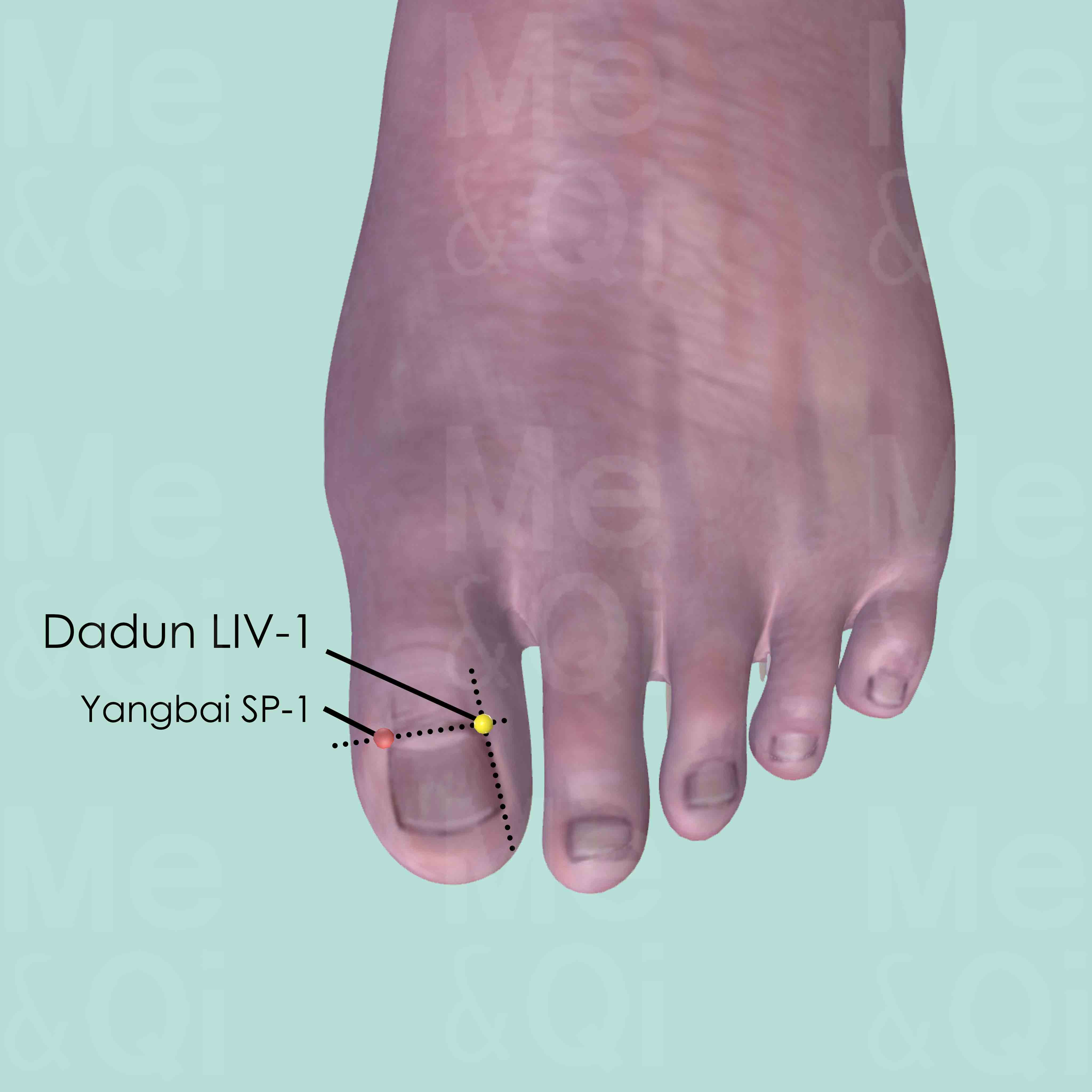
Dadun LIV-1
On the lateral side of the dorsum of the great toe terminal phalanx, between the lateral corner of the nail and interphalangeal joint.
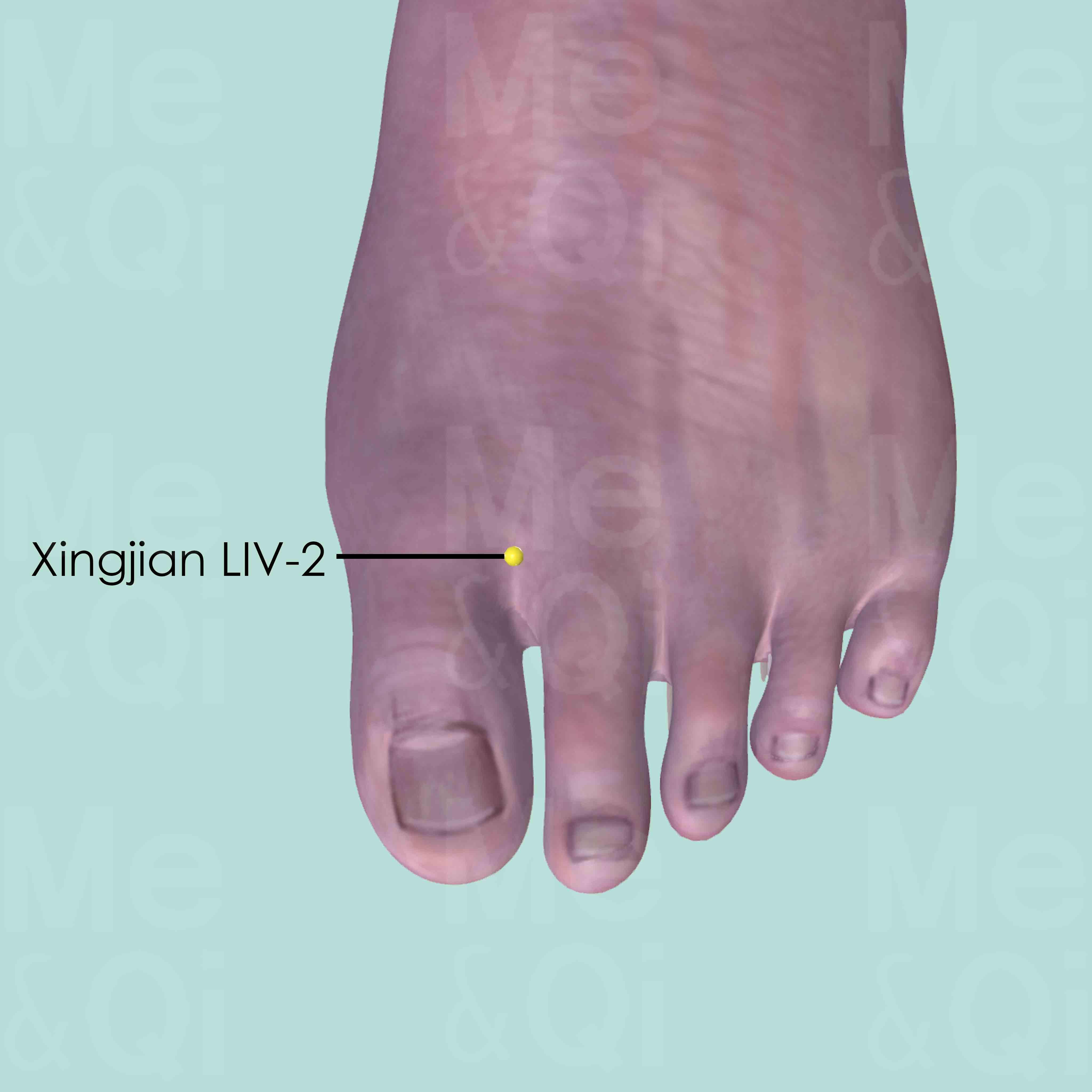
Xingjian LIV-2
Between the first and second toe, on the dorsum of the foot, 0.5 cun proximal to the interdigital fold.
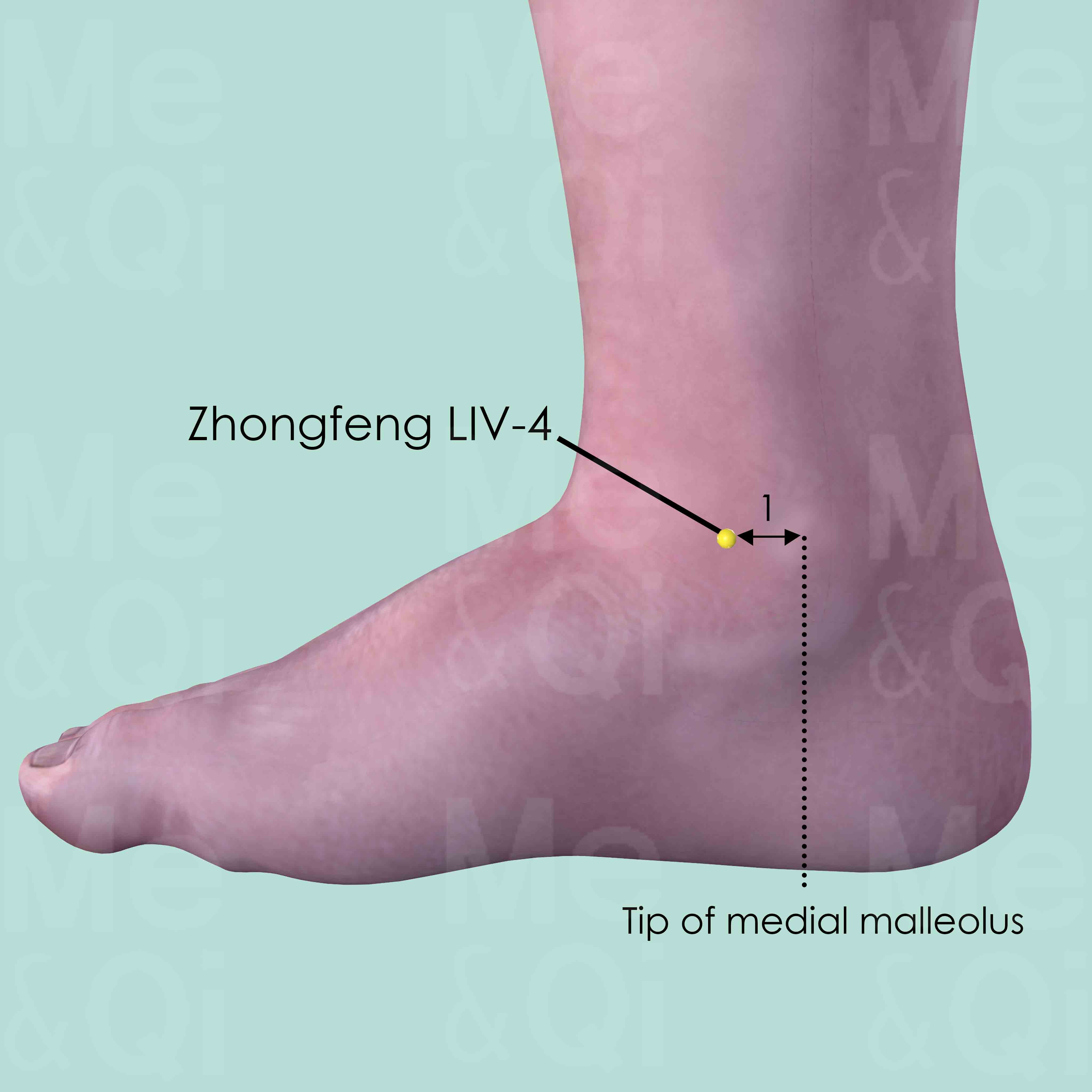
Zhongfeng LIV-4
1 cun anterior to the tip of medial malleolus, in the depression on the medial side of the tendon of the tibialis anterior.
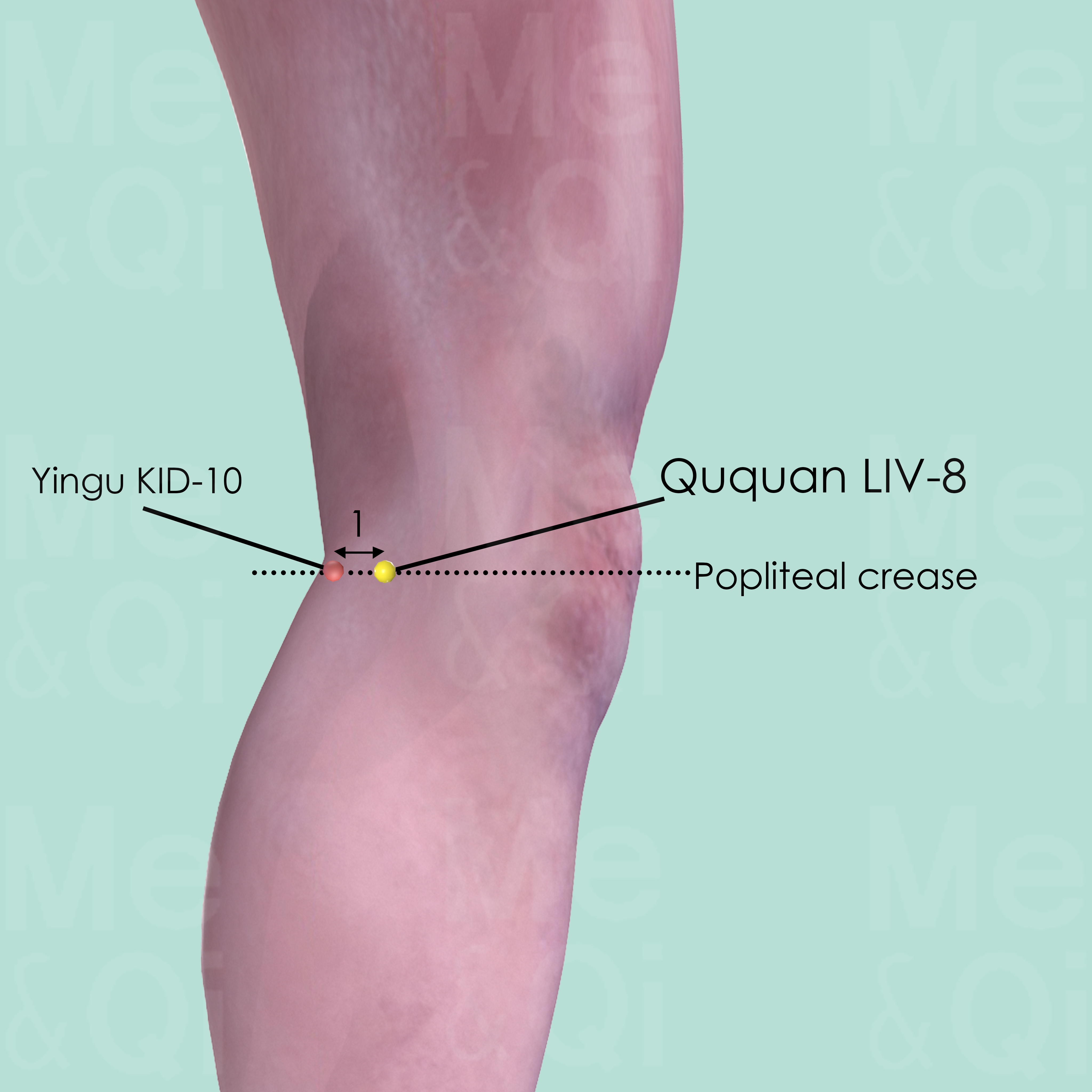
Ququan LIV-8
On the medial aspect of the knee join. Flex the knee and locate the point above the medial end of the popliteal crease, posterior to the medial condyle of the tibia, on the anterior border of the insertion of semimembranosus and semitendinosus muscle, about 1 cun anterior to Yingu KID-10.
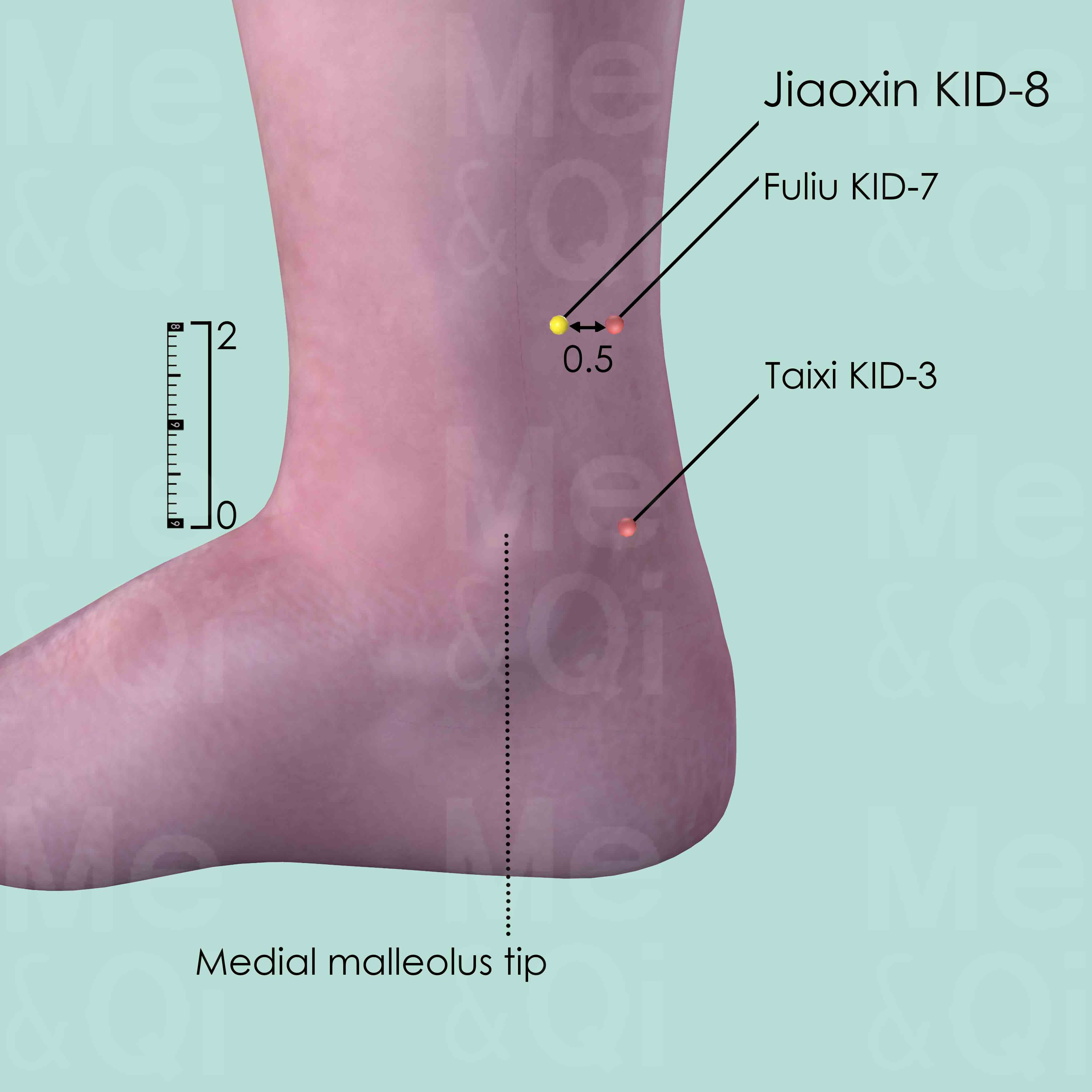
Jiaoxin KID-8
2 cun above Taixi KID-3, 0.5 cun anterior to Fuliu KID-7, posterior to the medial border of tibia.
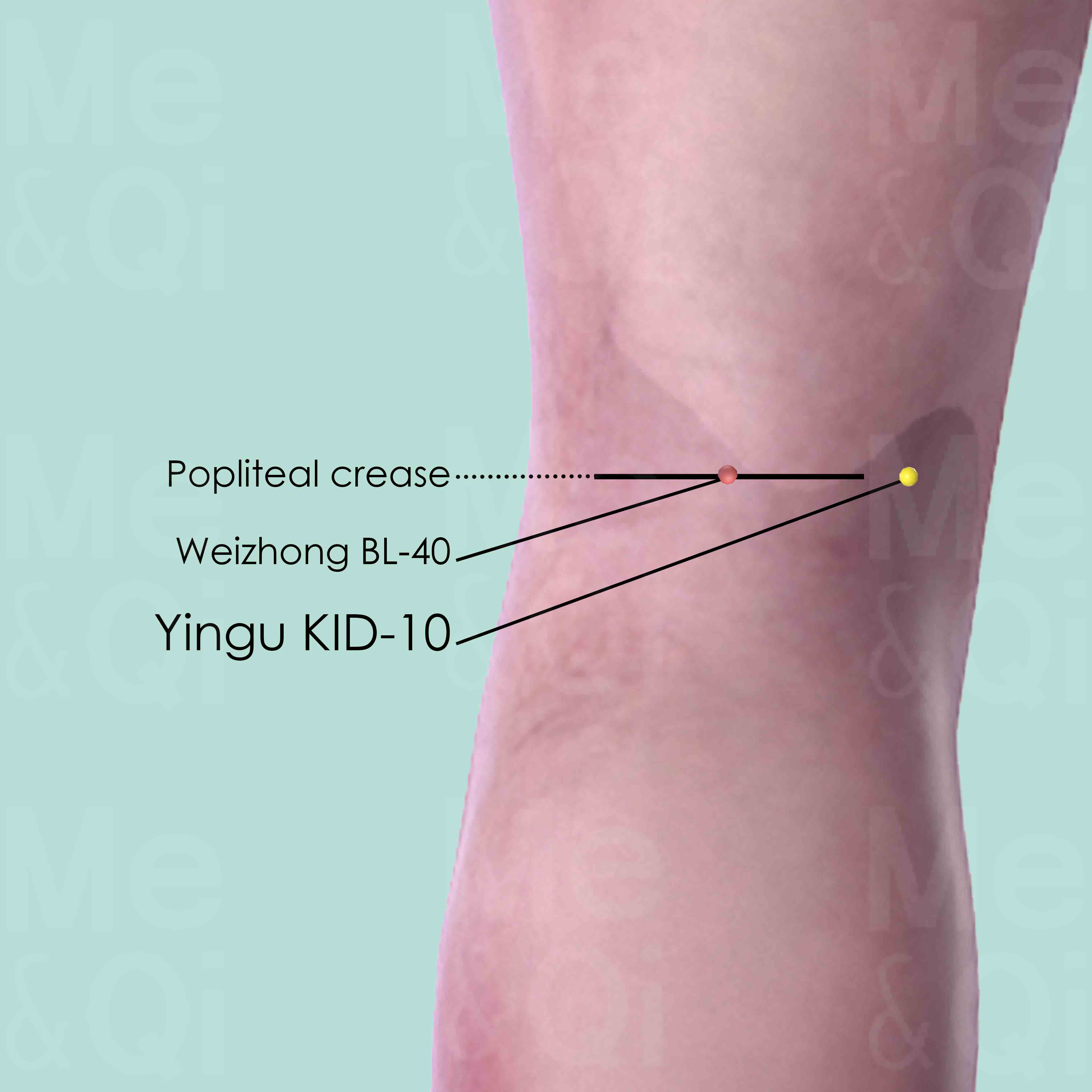
Yingu KID-10
On the medial side of the popliteal fossa, level with Weizhong BL-40, between the tendons of semitendinosus and semimenbranosus muscle when the knee is flexed.
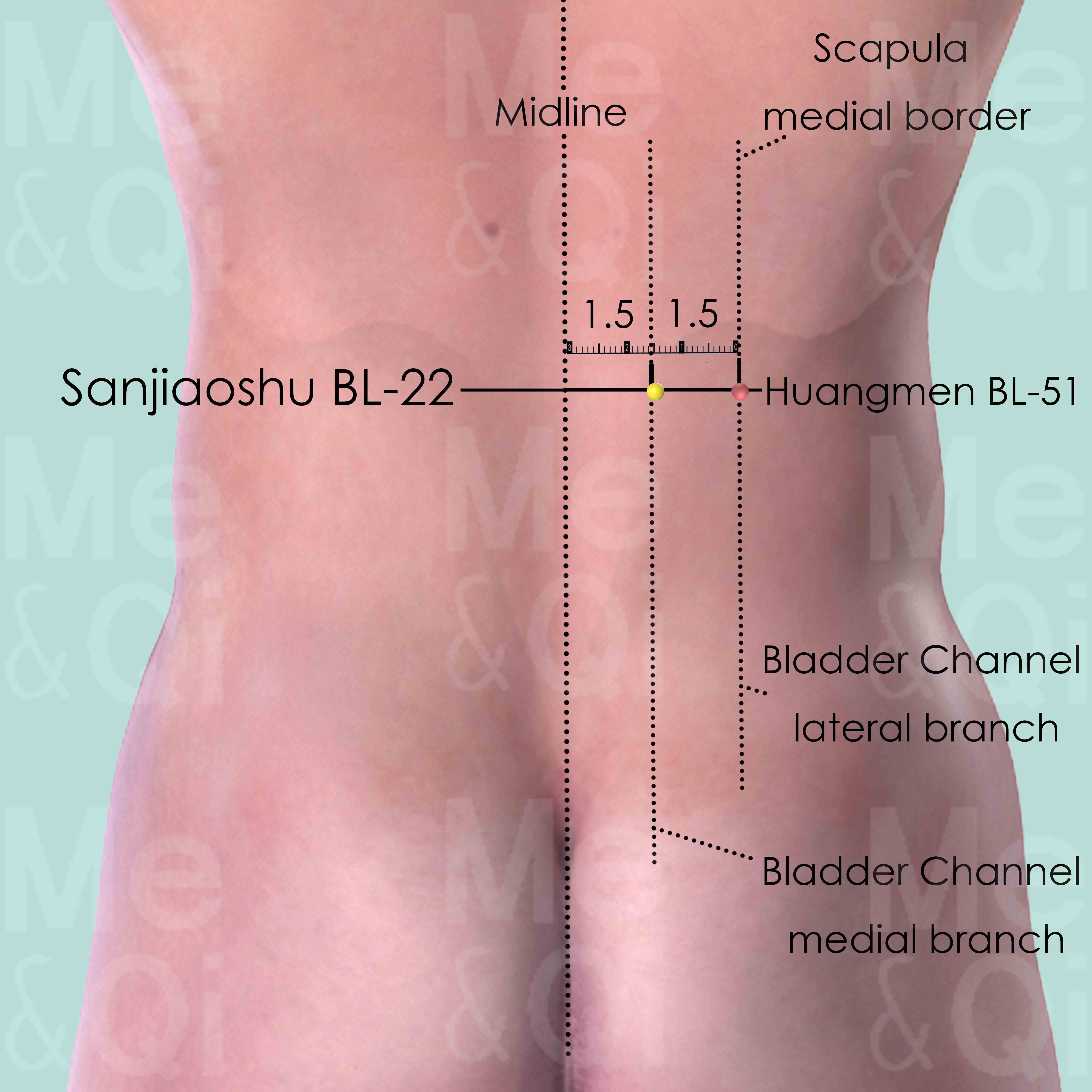
Sanjiaoshu BL-22
1.5 cun lateral to the lower border of the spinous process of the 1st lumbar vertebra.
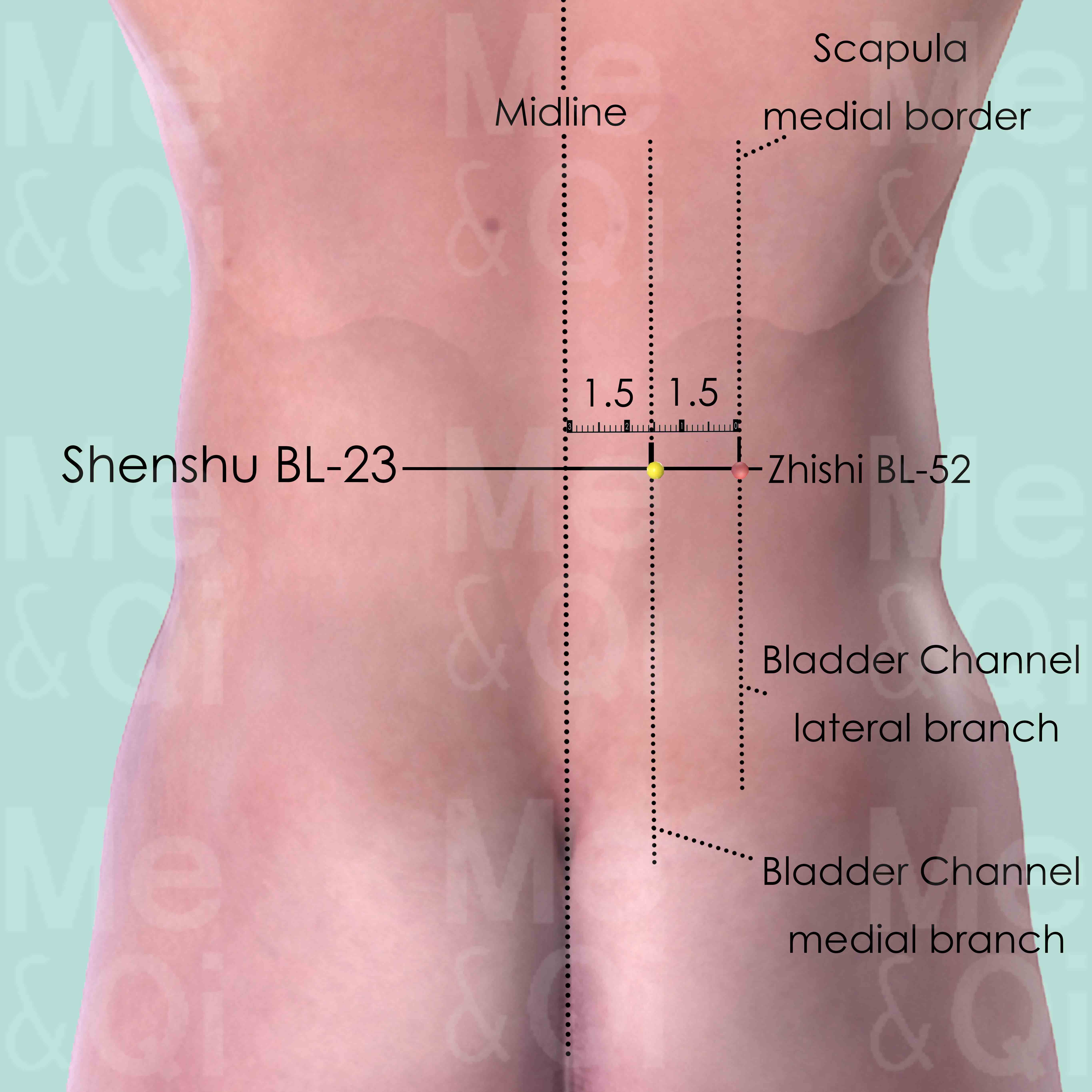
Shenshu BL-23
1.5 cun lateral to the lower border of the spinous process of the 2nd lumber vertebra (L2).
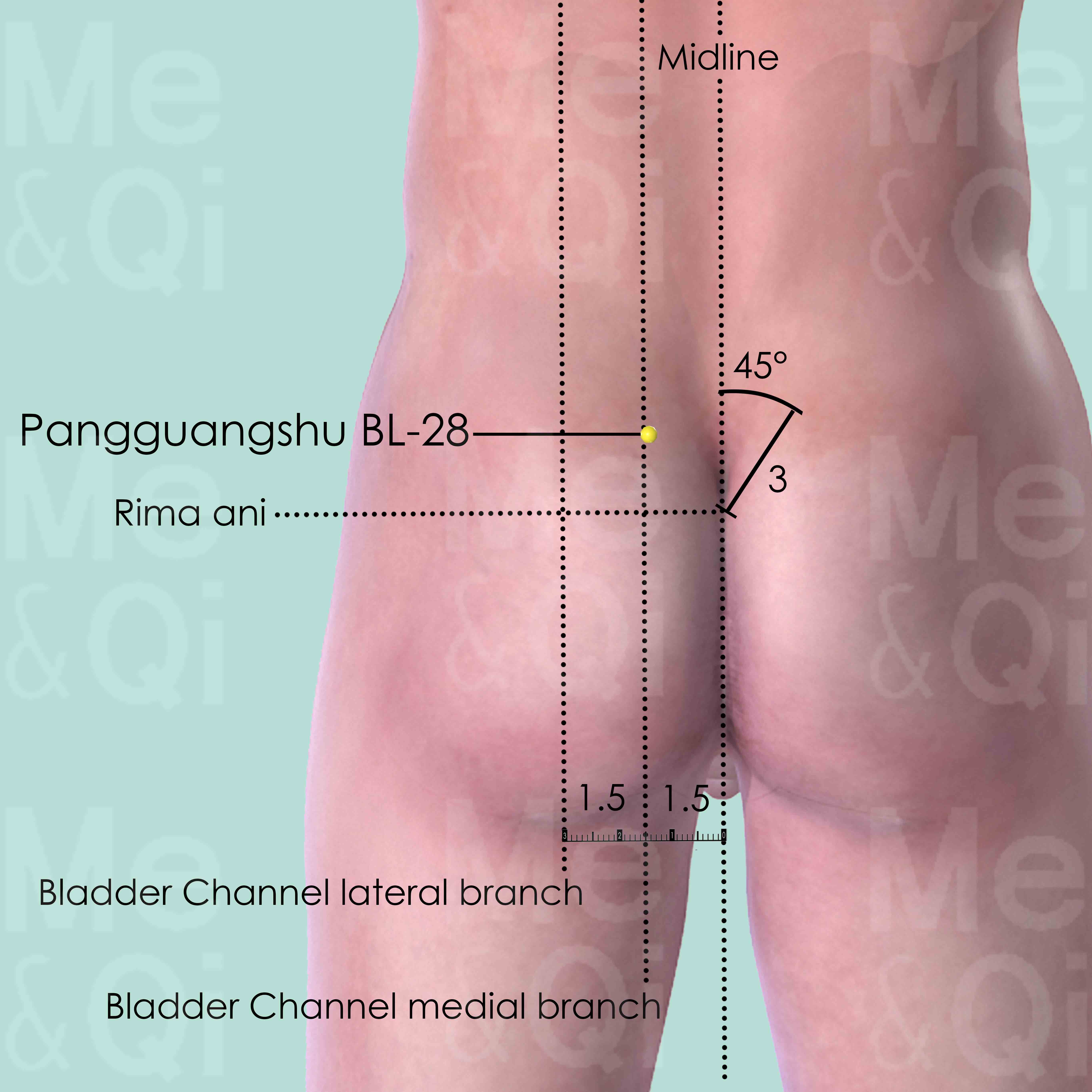
Pangguangshu BL-28
At the level of the 2nd posterior sacral foramen, 1.5 cun lateral to the posterior midline, in the depression between the medial border of the posterior superior iliac spine (PSIS) and the sacrum.
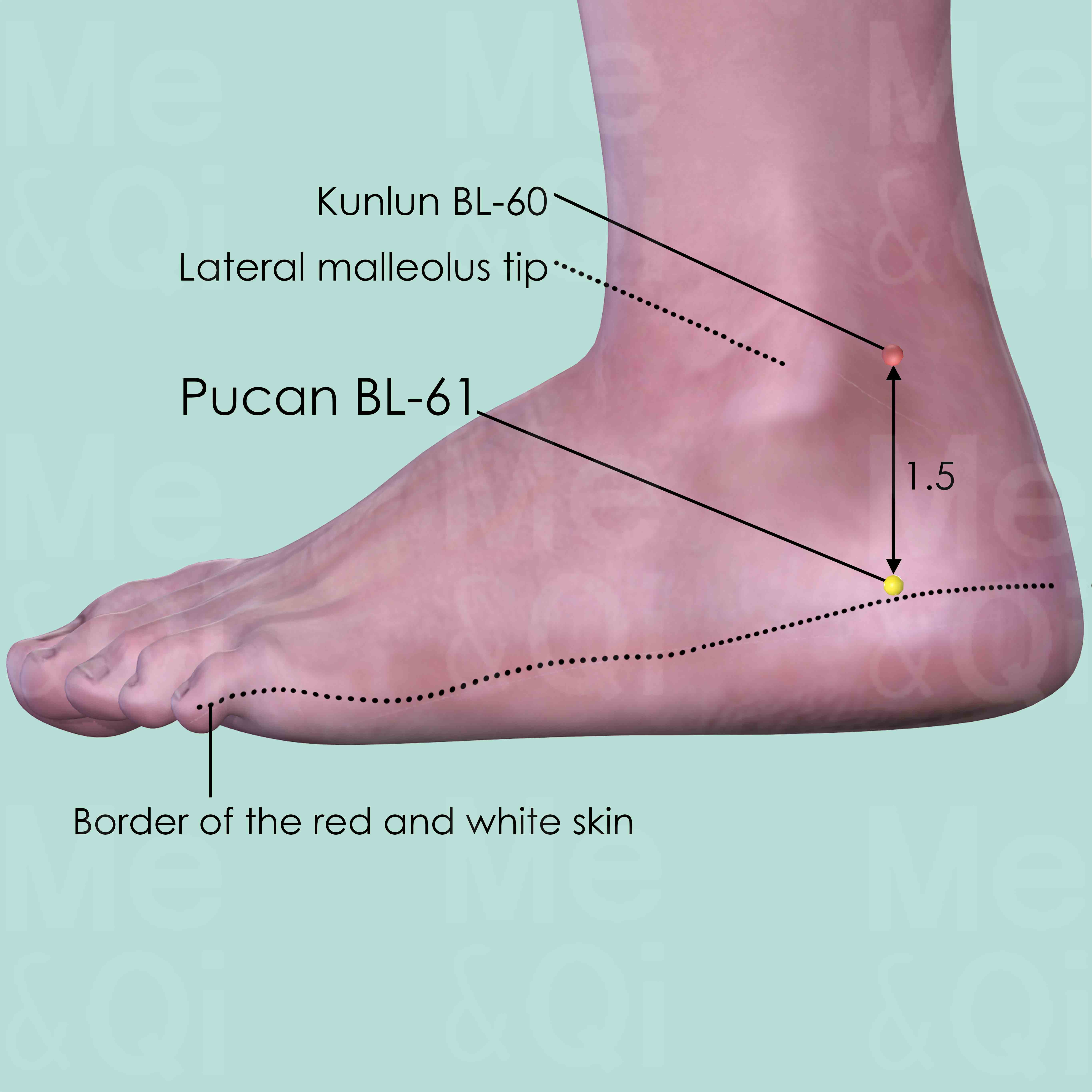
Pucan BL-61
Posterior and inferior to the external malleolus, directly below Kunlun BL-60, in the depression of the calcaneum at the junction of the red and white skin.
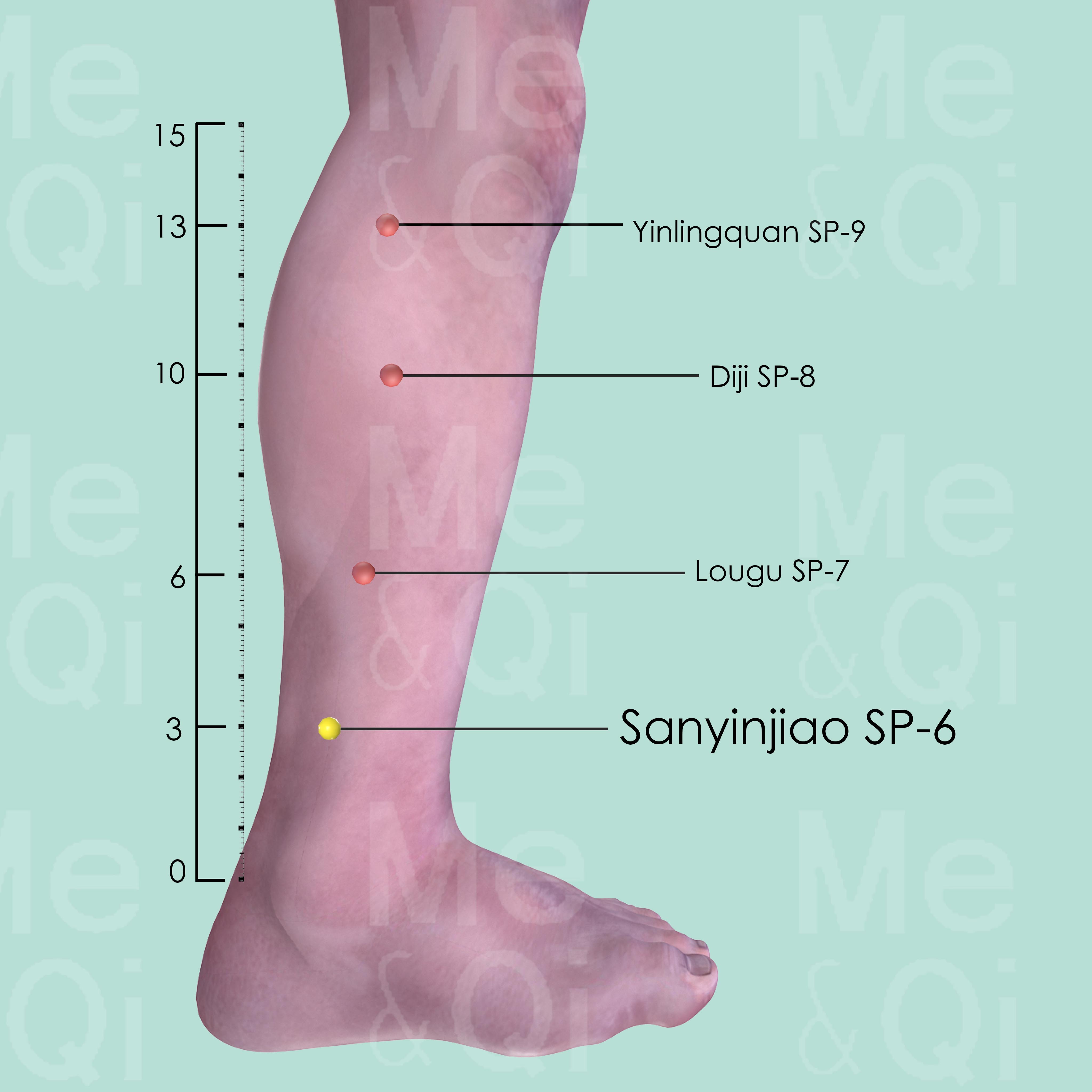
Sanyinjiao SP-6
3 cun directly above the tip of the medial malleolus, on the posterior border of the tibia, on the line drawn from the medial malleolus to Yinlingquan SP-9.
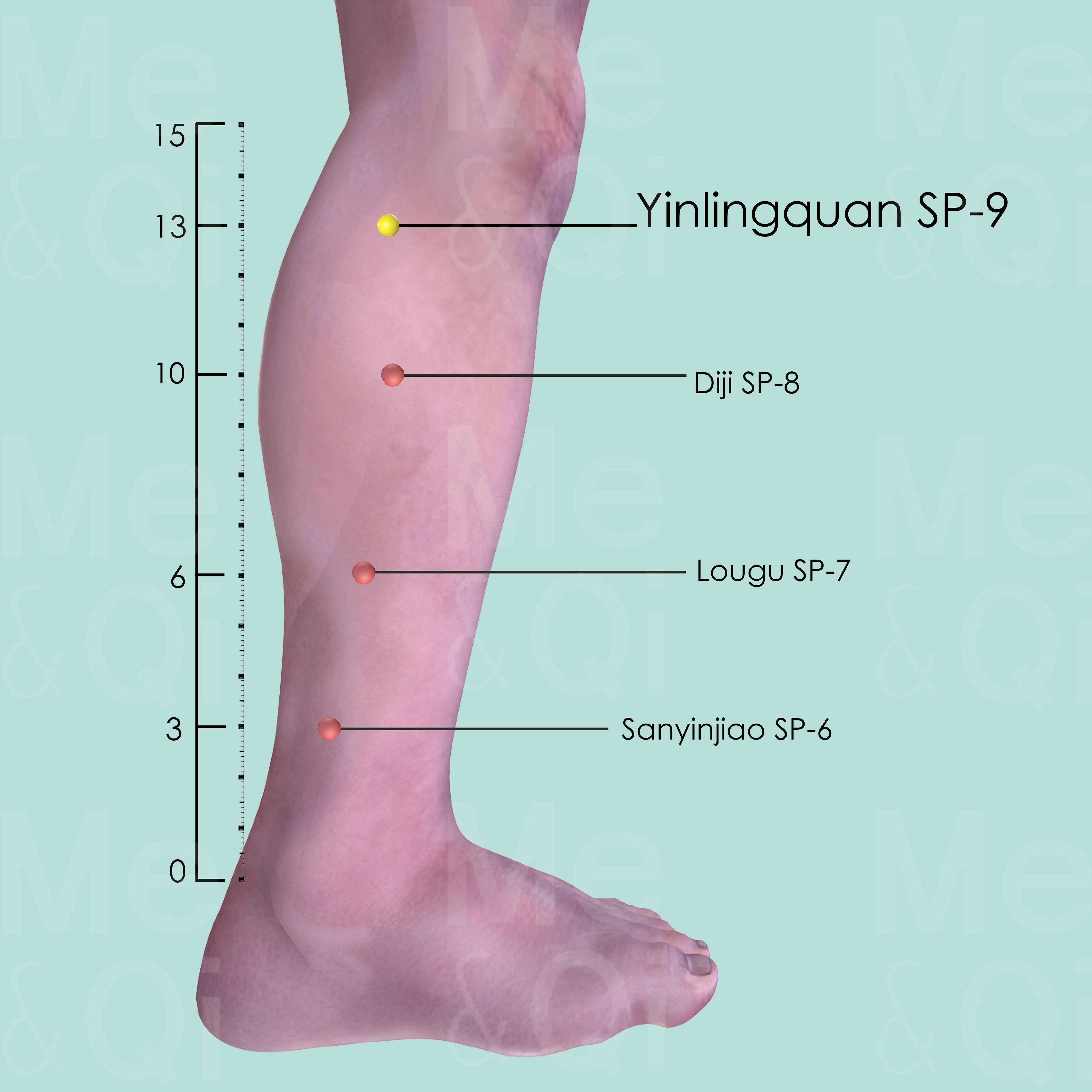
Yinlingquan SP-9
On the lower border of the medial condyle of the tibia, in the depression between the posterior border of the tibia and gastrocnemius muscle.

